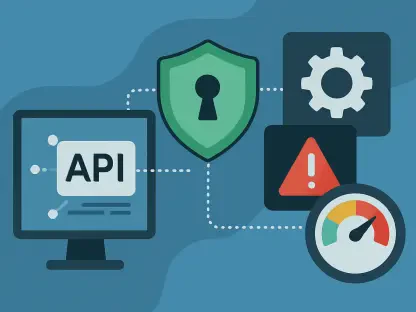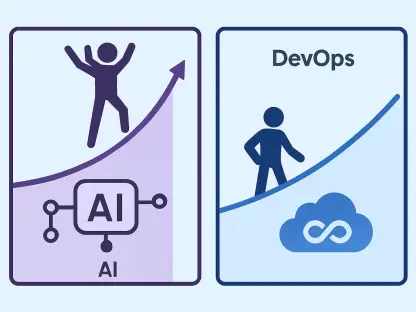In the rapidly evolving world of technology, few platforms have managed to remain as relevant as Enterprise Java. At the forefront of this evolution is Jakarta EE, championed by experts like Vijay Raina, who has been pivotal in steering thought leadership in the domain. Today, we delve into the intricacies of Jakarta EE with Vijay, exploring its role in modern software architecture and what the future holds for it in enterprise Java development.
What has made Enterprise Java a critical choice for mission-critical applications over the years?
Enterprise Java has always stood out because of its robustness, stability, and platform independence. These traits make it an ideal choice for mission-critical applications that need to perform reliably under significant stress. Banks, telecommunications, and other sectors relying on heavy transactional systems find comfort in Java’s promise of stability. Over the years, the ecosystem around Java, including libraries and tools, has grown, too, making it a go-to for serious enterprise-grade development.
How has software architecture evolved with trends like microservices, containers, and cloud-native paradigms?
Software architecture has undergone a significant transformation influenced by the need for flexibility and scalability. We’ve moved from monolithic applications to microservices architectures, which are essentially small, independent services that are highly maintainable and deployable. Containers have become the standard for packaging these microservices, providing consistency across environments. Similarly, cloud-native paradigms aim to leverage cloud capabilities fully, such as auto-scaling and distributed computing, which are now essential for meeting user demands and reducing infrastructure costs.
Why is Jakarta EE considered relevant in modern Java development despite these architectural shifts?
Jakarta EE remains relevant because it provides a standardized, vendor-neutral set of APIs that simplify building and deploying cloud-native applications. It effectively bridges traditional reliability and modern system needs, making it possible for developers to maintain robust applications while exploring new architectural patterns like microservices. The ability to marry old and new architectures is critical; therefore, Jakarta EE is indispensable for developers seeking to innovate while maintaining operational stability.
What role does the Eclipse Foundation play in the evolution of Jakarta EE?
The Eclipse Foundation has been instrumental in the open-source development strategy of Jakarta EE. By transitioning from Java EE to Jakarta EE under the Eclipse Foundation, Java has embraced a community-driven approach. This has allowed a more dynamic evolution of standards, reflecting real-world needs and enabling faster innovation cycles. The foundation acts as a custodian, ensuring that Jakarta EE meets the demands of developers and businesses, keeping it contemporary with industry trends.
How does Jakarta EE help bridge traditional enterprise reliability with the needs of today’s distributed systems?
Jakarta EE blends the reliability businesses expect from traditional enterprise systems with the flexibility and scalability required by modern distributed systems. Its API support for essential services like messaging, batch processing, and dependency injection provides a stable backbone for applications. At the same time, its modular design lets organizations adapt to new distributed architectures without rebuilding everything from scratch. This coexistence of flexibility and reliability is crucial for enterprises undertaking digital transformation journeys.
How do frameworks like Spring, Quarkus, and Helidon rely on Jakarta EE technologies?
These frameworks heavily leverage Jakarta EE’s standardized APIs to provide enhanced functionalities and developer convenience features. For example, Spring’s use of Jakarta Persistence API through Spring Data JPA shows direct reliance. Similarly, Quarkus and Helidon incorporate Jakarta technologies to offer seamless and efficient operations in cloud-native environments. They’re not competitors to Jakarta EE but rather layers built on top of the foundational robust APIs that Jakarta EE offers.
Can you explain the significance of Jakarta EE’s namespace migration from javax. to jakarta. packages?**
The namespace migration was significant as it officially marked Jakarta EE’s breakaway from the constraints of the past under Oracle’s stewardship. This “big bang” not only symbolized independence and fresh direction but also encouraged developers and companies to align their tech stack to more modern practices. The shift to jakarta.* has admittedly required some adjustments, but it ensured that the ecosystem could evolve without legal encumbrances and pave the way for continued innovation.
Why is understanding Jakarta EE important for all Java developers, even if they aren’t directly programming against its APIs?
Even if you’re not directly programming against Jakarta EE APIs, understanding them is crucial as they often form the backbone of the stacks you work with. Many Java frameworks and tools either extend or rely on Jakarta EE specifications. By familiarizing themselves with these standards, developers can gain insights into performance implications, API designs, and best practices that impact the efficiency and reliability of the applications they build, regardless of the frameworks chosen.
What were the major platforms in Java’s architectural lineage, and how did Java EE emerge among them?
Java’s architectural lineage started with Java SE for standard applications, Java ME for mobile devices, and Java EE for enterprise applications. Java EE emerged to tackle the growing complexity of server-side development. It introduced frameworks and patterns that standardized enterprise solutions, including servlets and enterprise beans, which helped in addressing large-scale application needs. Its evolution into Jakarta EE represents a commitment to modernizing and extending these principles in a rapidly changing technological landscape.
Can you expand on the profiles within Jakarta EE and their purposes?
Jakarta EE features three profiles, allowing developers to pick what fits their needs best:
- The
Core Profile
targets lightweight microservices, supporting basic functionalities while remaining minimal.
- The
Web Profile
is optimized for standard enterprise web applications, covering primary needs like servlets, REST services, and CDI.
- The
Full Platform Profile
includes everything, addressing comprehensive needs such as batch processing and enterprise messaging, ideal for complex application ecosystems.
These profiles offer flexibility, enabling targeted deployments that avoid unnecessary complexity.
Discuss the importance of Jakarta EE’s structured approach for both greenfield and legacy projects.
Jakarta EE’s structured approach allows developers to tailor solutions that suit specific needs without sacrificing on standards. For greenfield projects, it offers a modern platform grounded in proven principles, facilitating quick development and deployment. For legacy systems, Jakarta EE provides a structured evolutionary path, allowing gradual modernization instead of disruptive overhauls. This fosters long-term innovation while ensuring continuity and leveraging existing investments.
Outline the new specifications introduced in Jakarta EE 11. What does Jakarta Data offer Java developers, and how does CDI improve across all specifications?
Jakarta EE 11 represents a significant evolution with several new specifications:
Jakarta Data
standardizes data access across different storage solutions, offering developers a unified approach across various persistence technologies.
CDI enhancements
in Jakarta EE 11 further streamline dependency management, reduce boilerplate, and enable more coherent and orthogonal application architectures across the board.
These advancements help developers by providing a consistent programming model, thus focusing more on business logic than technical intricacies.
How does Jakarta EE 11 integrate with cloud-native tooling and DevOps workflows?
Jakarta EE 11 has become more amenable to cloud-native environments and DevOps practices by aligning with container orchestration platforms and continuous integration/continuous deployment pipelines. This integration facilitates seamless deployment and scaling, essential in responding to unpredictable loads. Jakarta EE 11 supports automations and pluggable architectures that align perfectly with DevOps goals, speeding up development cycles and reducing time to market.
What are the proposed changes for Jakarta EE 12?
In Jakarta EE 12, there are ambitious goals aimed at deep ecosystem integration and performance improvements. Proposed changes include a potential convergence with Eclipse MicroProfile, which would unify enterprise Java standards and possibly introduce more comprehensive cloud-native features. Additionally, expanded APIs like Jakarta MVC and enhanced NoSQL support are anticipated. Performance gains in startup time and native compilation optimizations are also on the horizon to cater to microservices’ demands.
What conversations are taking place around the integration of Eclipse MicroProfile into Jakarta EE?
The integration conversations around Eclipse MicroProfile and Jakarta EE revolve around reducing fragmentation and leveraging complementary strengths. MicroProfile’s focus on microservices aligns well with Jakarta EE’s evolving cloud-native objectives. By combining forces, the aim is to eliminate redundancy, streamline specification development, and provide developers with a more cohesive set of tools. These discussions highlight the open, collaborative approach that characterizes the governance of these technologies.
Discuss the anticipated API enhancements for Jakarta EE 12.
API enhancements in Jakarta EE 12 are expected to broaden the platform’s utility and streamline developer experience. Proposed enhancements include modernized data access layers with Jakarta Data and extended capabilities in Jakarta MVC for web applications. Support for NoSQL databases will likely get standardized interfaces, and APIs will move towards better performance, especially concerning startup speeds and native compilation. These enhancements are strategically aimed at improving efficiency and expanding the platform’s applicability.
How does Jakarta EE 12 aim to improve performance related to startup time and native compilation?
Jakarta EE 12 envisions significant performance improvements, especially concerning startup times, by refining module-level optimizations and potentially reducing the service kernel’s footprint. Native compilation, particularly with tools like GraalVM, is expected to be more deeply integrated, capitalizing on faster execution times. This focus on performance aligns with the expectations of modern microservices and serverless environments, where quick startups and efficient resource utilization are crucial.
How is the future roadmap for Jakarta EE decided upon, and why is it considered a robust standard with open governance?
The Jakarta EE roadmap emerges from a collective, transparent process involving the Jakarta EE Working Group and broader community input through surveys and forums. Its open governance means decisions aren’t dictated by a single vendor but result from consensus among contributors, ensuring that the platform evolves to meet real-world needs. This openness builds trust and fosters a communal sense of ownership, solidifying Jakarta EE as a resilient and adaptable standard.
What is the role of the Java community in shaping Jakarta EE’s specifications and future?
The Java community is vital to shaping Jakarta EE. Through active participation in working groups, feedback forums, and direct contributions, community members influence the platform’s trajectory and feature set. This collaborative model not only democratizes the development process but also aligns the evolution of Jakarta EE with practical developer requirements and industry trends, ensuring its continued relevance and adaptability.
How can Java developers get involved with Jakarta EE’s development and contribute to its direction?
Java developers can engage with Jakarta EE through various means, such as joining mailing lists, participating in working groups, and contributing to discussions and code. Developers can also attend webinars, workshops, and Jakarta EE community events, offering insights and voting on potential changes. This collective approach empowers the community to impact the Jakarta EE platform’s direction actively, making a meaningful contribution to enterprise Java evolution.
Do you have any advice for our readers?
For any developer vested in Java, understanding and engaging with Jakarta EE is invaluable. Keep yourself updated with the latest developments, join open forums, and consider contributing your experiences and ideas. As Jakarta EE continues to evolve, being part of its journey means you’re not only adapting to change but actively shaping it for the collective benefit of the ecosystem.









